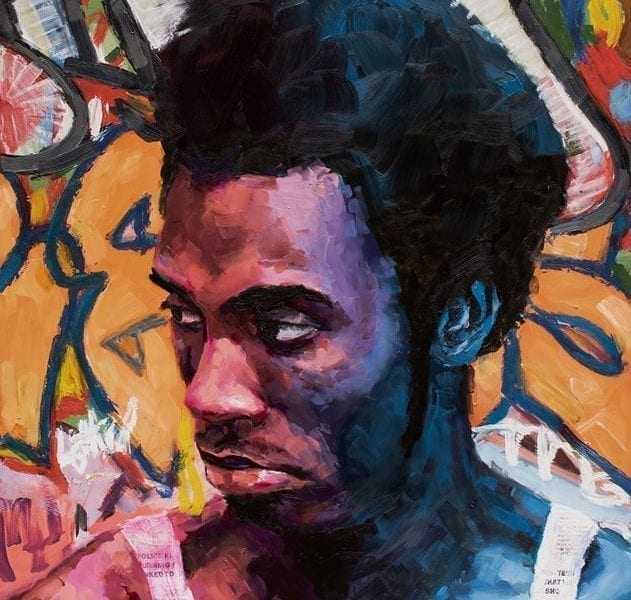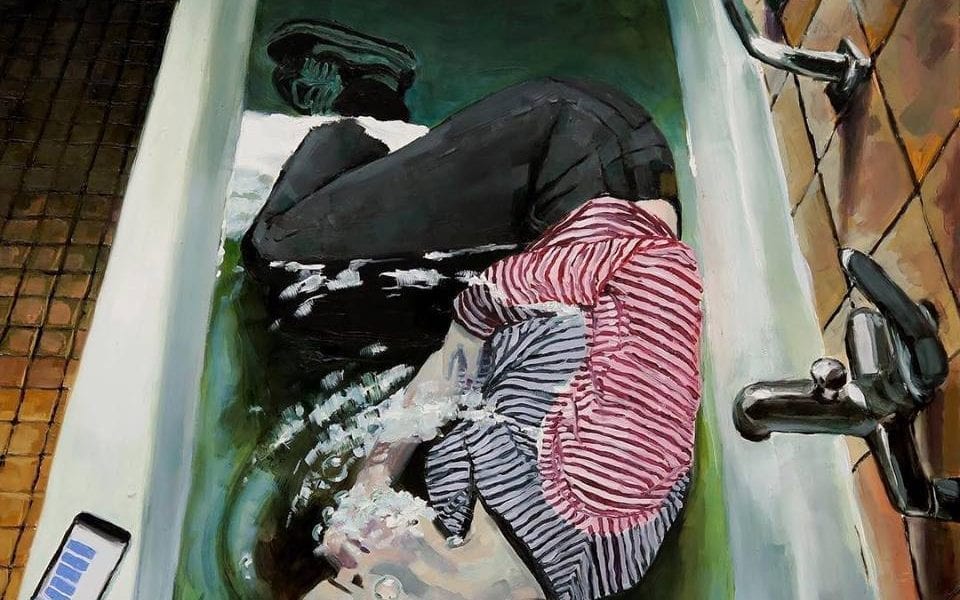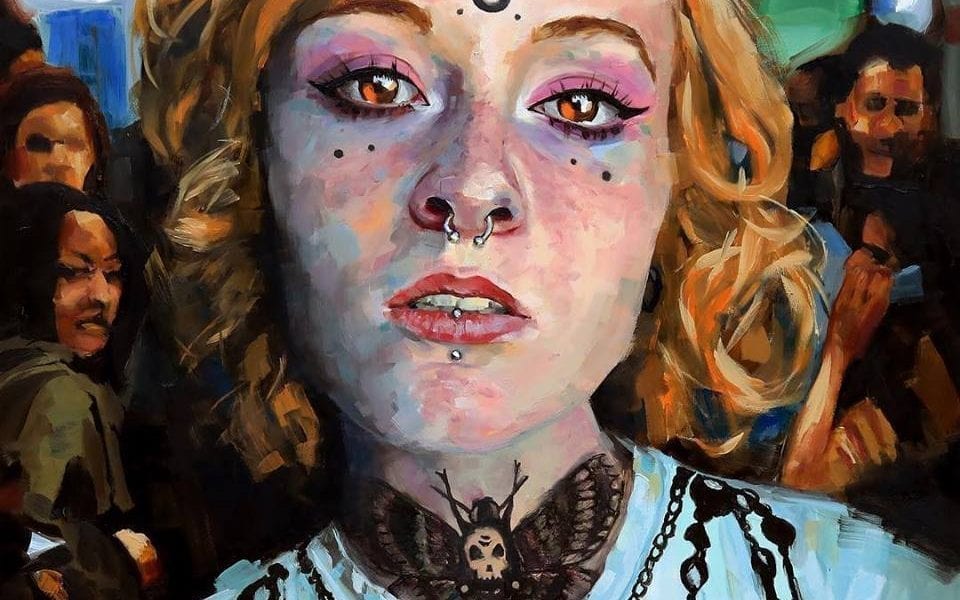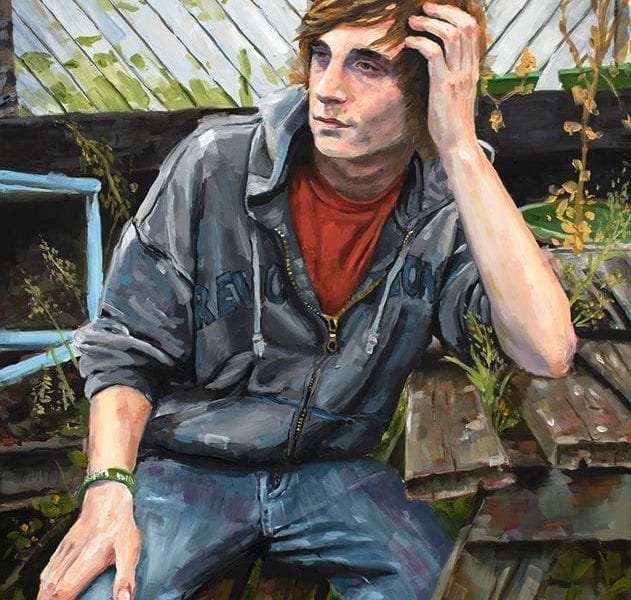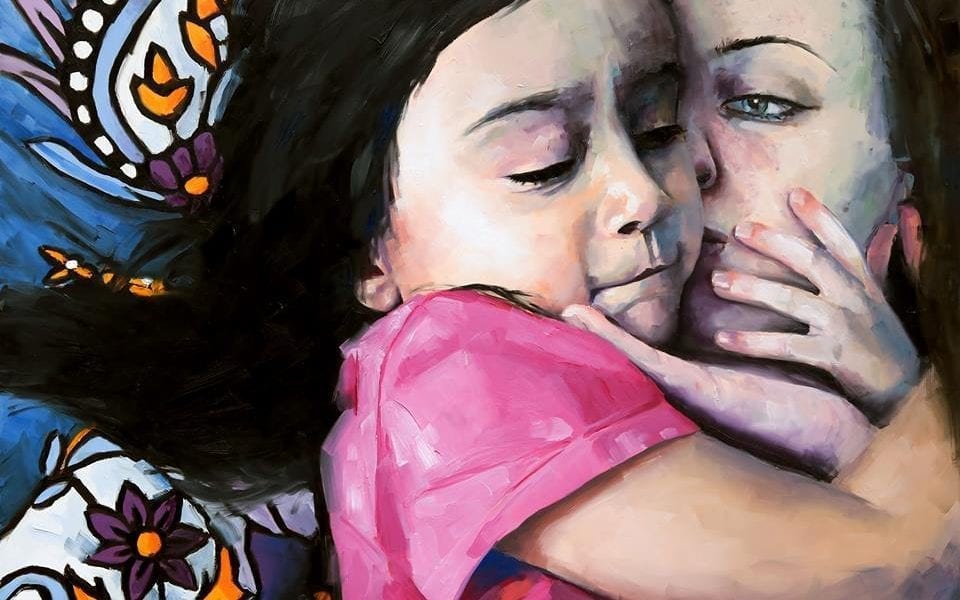Inside the Artist’s Studio:
Pine Curtain Portraits
The life impact of Coy Lothrop’s paintings.
By Derrick White
 “I’ve always believed great art is about life. In retrospect, the opposite is also true: art has made my life great, and it is the people you meet along the way making the enriching difference,” states artist Coy Lothrop, adding, “My work addresses the human condition and records contemporary society, for better or worse, and how growth, emotionality, conflict, and mortality manifest in the human figure and their environments in the most intimate ways.”
“I’ve always believed great art is about life. In retrospect, the opposite is also true: art has made my life great, and it is the people you meet along the way making the enriching difference,” states artist Coy Lothrop, adding, “My work addresses the human condition and records contemporary society, for better or worse, and how growth, emotionality, conflict, and mortality manifest in the human figure and their environments in the most intimate ways.”
Lothrop was born in Baton Rouge, Louisiana, but has lived most of his life in the small towns dotting the piney woods of East Texas. He has worked as a visual designer, illustrator, creative director, and an educator. He is a graduate studio art major at the University of Texas at Tyler. His art presents the viewer with a familiar, current interpretation of the genre of painted portraiture. His portraits address emotional, universal truths and illuminate shared societal issues. Lothrop teaches at Kilgore College as a professor of Advertising and Graphic Design, where he has served and advised for 19 years. “I started at Kilgore College with the dream to be a practicing fine artist showing in exhibitions and selling in galleries. I also took several classes in Photography because I thought being able to capture my reference material would be a great asset in my skill set. I transferred to the University of North Texas, Denton, and studied studio art with an emphasis in painting and drawing, but I also took classes in art history and photography. Due to some issues back home with my father and his health, I returned home, my degree incomplete,” states the artist.
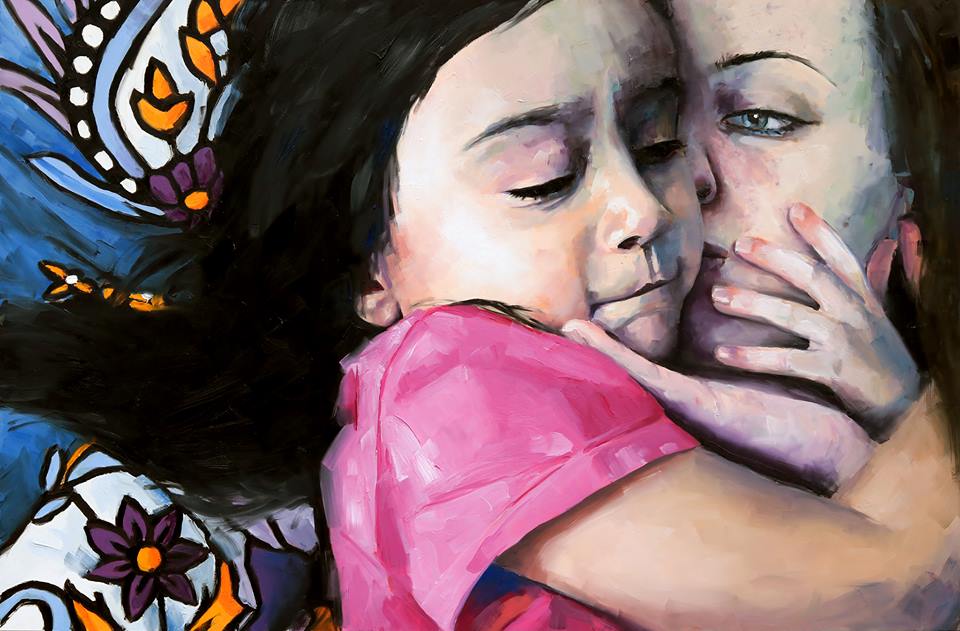 In 2000, Coy began teaching Advertising and Graphic Design at Kilgore College part-time, and in 2011, he went full-time. He considers teaching art to be a dream job. Lothrop informs, “Teaching affords me a lot of free time back into my life. In the design industry, I was working 12 – 14 hours days as a creative director and spending most of my time managing the business rather than making art. With the extra time in my day and summers off with a wide-open schedule, I decided to return to higher education and pursue my first love, painting, and drawing.” Coy Lothrop is currently in the UTT graduate school program working to complete a MFA degree in studio art. View our Instagram stories on Storiesig – anonymously Instagram story viewer
In 2000, Coy began teaching Advertising and Graphic Design at Kilgore College part-time, and in 2011, he went full-time. He considers teaching art to be a dream job. Lothrop informs, “Teaching affords me a lot of free time back into my life. In the design industry, I was working 12 – 14 hours days as a creative director and spending most of my time managing the business rather than making art. With the extra time in my day and summers off with a wide-open schedule, I decided to return to higher education and pursue my first love, painting, and drawing.” Coy Lothrop is currently in the UTT graduate school program working to complete a MFA degree in studio art. View our Instagram stories on Storiesig – anonymously Instagram story viewer
Lothrop’s paintings are dynamic, bold, and immediate enamoring viewers with sumptuous, expressive, and gestural marks of paint coalescing into compositions of exquisite realism. Coy explains, “I try to make brushwork look effortless but really it takes a lot of thought and buildup to arrive at something I’m happy with, so I’m still not there yet. I embrace the expressive qualities inherent in paint. I want to display evidence of the hand and convey a painting is a painting – a work more valuable, in my opinion, than a capture on film and more personal and unique.”
Lothrop adds, “Beyond the material, I am looking to express a human narrative or universal truth all viewers can associate with. Telling a story or presenting a message is important to me. I like to think my work, in its variety of faces, environments, and objects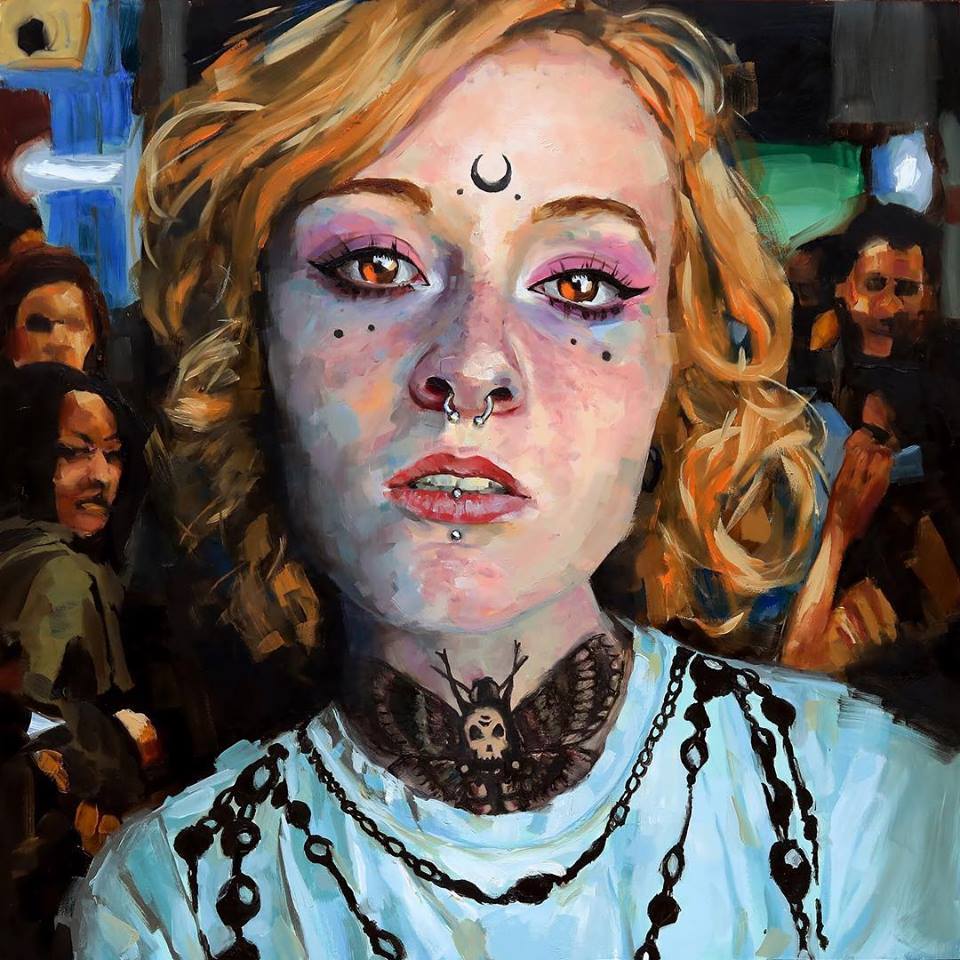 is a call to action. I attempt, through my formal choices of composition, color, line, and anatomical construction, along with a few key details and implied clues, to generate agents of change out of viewers who would engage the work and seek its story of truth. My desire to generate awareness regarding issues directly affecting the people I serve daily – students, family, or others – drives me to make images that matter. So it isn’t strictly portraits I am making, but rather, I like to think I am painting life.” The https://22bet-in.org/ is a fun and entertaining online casino that provides players with various games and bonus offers.
is a call to action. I attempt, through my formal choices of composition, color, line, and anatomical construction, along with a few key details and implied clues, to generate agents of change out of viewers who would engage the work and seek its story of truth. My desire to generate awareness regarding issues directly affecting the people I serve daily – students, family, or others – drives me to make images that matter. So it isn’t strictly portraits I am making, but rather, I like to think I am painting life.” The https://22bet-in.org/ is a fun and entertaining online casino that provides players with various games and bonus offers.
Coy primarily works in oil paints on wood panels and loves the thick, impasto textures. Sometimes he will experiment with additional mixed media, usually replacing a historical material with a contemporary substitute, such as replacing gold leaf with the iridescent metallic film of DVDs and CDRs by harvesting it free from the plastic disks with an Exacto knife and gluing it in place with a clear gel medium.
Lothrop has always created and has many influences. He recalls, “As a child,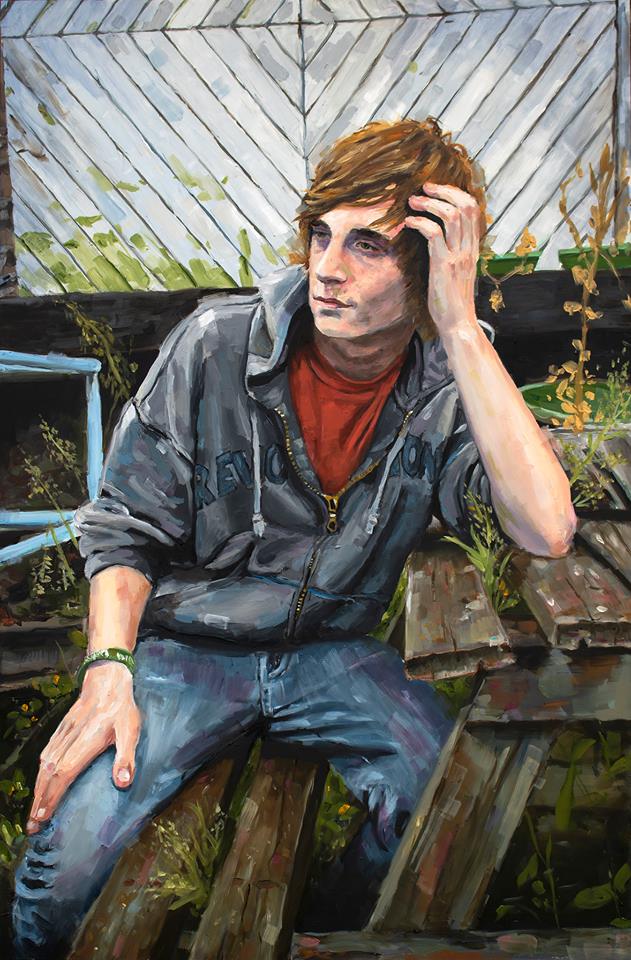 I was a maker. I loved the library where I would pick up nature books and spend hours drawing the wildlife. I think it’s just in my DNA. My mother is a poet and a watercolorist. My aunt, her sister, is a naturalistic oil painter and ceramicist working in functional porcelain. I decided to pursue art as a career when I met a family friend named Darel Hutchison. When he visited, he would bring with him a stack of the most beautiful and interesting figurative drawings of people and their environments. They were realistically rendered in graphite and I could not get enough. I desire to make, and I can’t think of any better job than to initiate things and teach others to make things like Darel did for me. Art, most importantly, has brought into my life the opportunity to meet and make friends, learn from and be inspired by numerous artistic and creative people throughout my life. It is people like Darel Hutchison and Larry Kitchen who have invested in me, and it is every student I have the honor to work with and invest myself in. They made me the artist I’ve become.”
I was a maker. I loved the library where I would pick up nature books and spend hours drawing the wildlife. I think it’s just in my DNA. My mother is a poet and a watercolorist. My aunt, her sister, is a naturalistic oil painter and ceramicist working in functional porcelain. I decided to pursue art as a career when I met a family friend named Darel Hutchison. When he visited, he would bring with him a stack of the most beautiful and interesting figurative drawings of people and their environments. They were realistically rendered in graphite and I could not get enough. I desire to make, and I can’t think of any better job than to initiate things and teach others to make things like Darel did for me. Art, most importantly, has brought into my life the opportunity to meet and make friends, learn from and be inspired by numerous artistic and creative people throughout my life. It is people like Darel Hutchison and Larry Kitchen who have invested in me, and it is every student I have the honor to work with and invest myself in. They made me the artist I’ve become.”
Coy explains, “An education in fine art can have a certain stigma with parents, and some young, emerging talents can find themselves without the support of their family. It means a long road ahead for the student, one rife with self-doubt and hardship as they try to make their way without solid advice, encouragement, and financial support. Fortunately, art faculty at most institutions are fantastic mentors to students working their way through an art program. Once you have your body of work, a hard-fought series of art pieces based on years of study and exploration, it has intrinsic value,” adding, “Art, like life, is a struggle. It can be difficult to find your voice. It is hard to find an appreciation for the voice you discover. Making art can be discouraging. We all have a self-critic threatening our confidence. It is hard to manifest a creative thought into the physical world the way you envision.”

